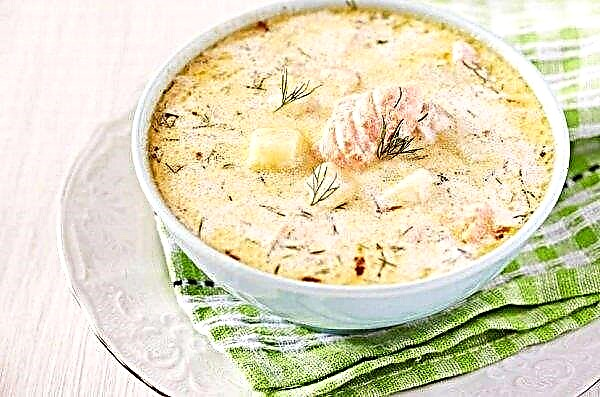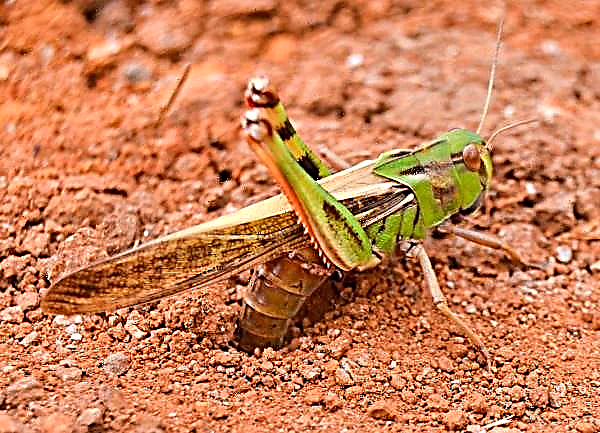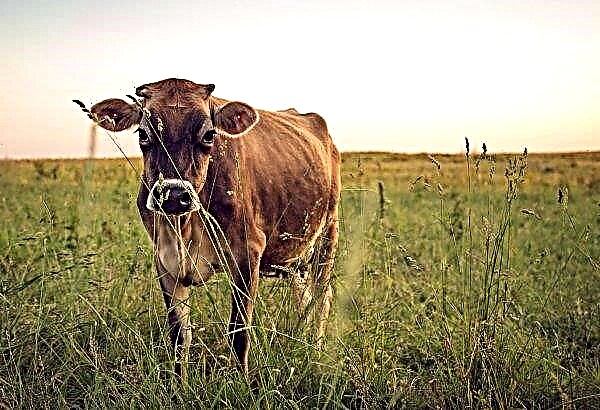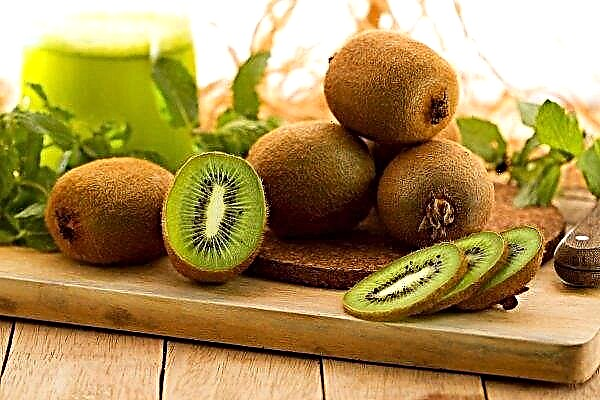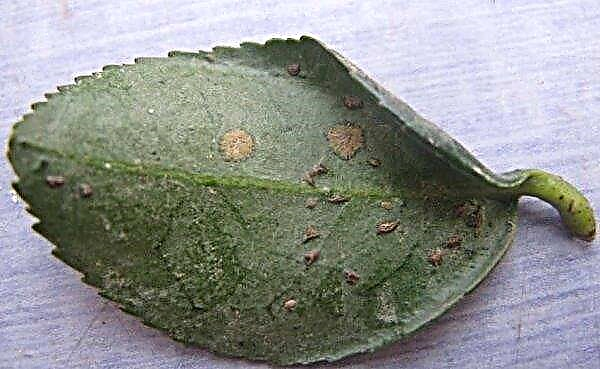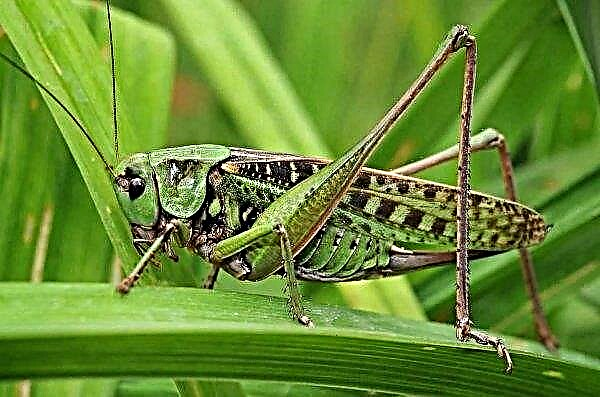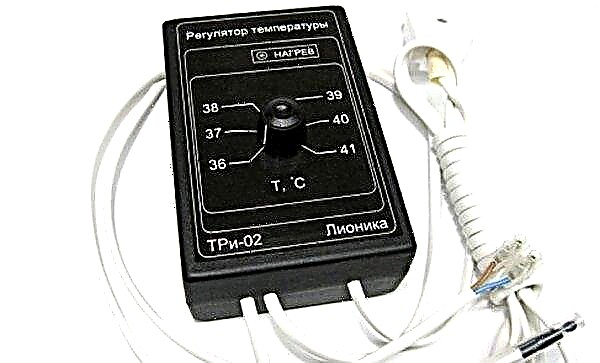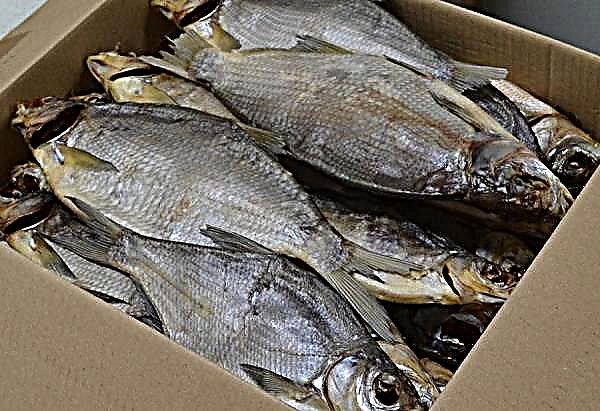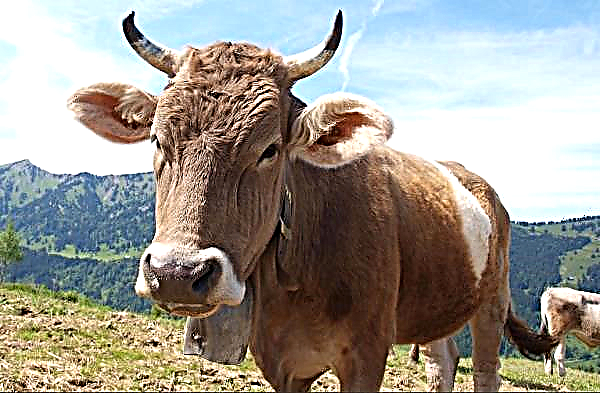When transporting seeds of various crops from abroad, along with them, it’s not uncommon, weed plants also come to us. It was in this way that American grass, which used to grow only in America, got onto the plots of post-Soviet landowners. The main characteristics of the weed, as well as how to deal with it, read below.
American weed description
Considered weed grass belongs to the family of aster and is an annual plant. The stem is erect, reaching a height of 50 to 70 cm. It branches only in the upper part. Branches are very pubescent with soft white hairs. Leaves are paired, painted in bright green. They have an ovoid shape, large notches are clearly visible at the edges.
Did you know? Contrary to our ideas about herbs, they may not be one of the lowest tiers in the plant kingdom, but they can reach impressive heights. For example, bamboo refers to herbs, and its height may be 35 m.
The grass has an attractive appearance, especially during the flowering period (you can examine the plant in more detail in the photo). Flowers are formed in the upper part of the stem - at the tops of the branches. They have an umbrella shape. The middle is large, yellow. It is framed by 5 white petals that do not touch each other.
 After flowering, in place of the flowers, the fruits remain, represented by cone-shaped seeds with a lightened upper part, due to which they are easily carried downwind
After flowering, in place of the flowers, the fruits remain, represented by cone-shaped seeds with a lightened upper part, due to which they are easily carried downwind
Shade tolerance
The grass in question takes root on absolutely any type of soil. It adapts perfectly to different climate conditions. The only territories that the plant has not yet conquered around the world are the northern regions and deserts. The plant is completely unpretentious to lighting - it feels good in shaded areas and under the sun.
Fertility
An American is able to reproduce 20,000 seeds per season of active vegetation. Their germination capacity is 40%. Weed compensates for this deficiency by the ability to sprout stems - roots begin to form from the region of internodes.
When seeds enter the soil, their ability to germinate can persist for 10 years. American shoots appear throughout the warm season, starting in spring and ending in late autumn.Important! If you do not remove the roots of the plant during weeding, after a few days, it will form a new ground part.
Survivability
The vegetation is incredibly tenacious. Even after complete removal from the soil, the American, absorbing nutrients from the atmosphere, is able to enter the flowering phase and form full-fledged seeds.

Reasons for the rapid spread
The main reasons for the extremely rapid spread of weed is:
- ability to grow in any conditions;
- high productivity;
- low light intensity requirements;
- high survivability.
The benefits and harms of an American weed
In addition to the harm done directly to other cultivated plants by suppressing their development, the herb in question is very useful. It can be used for medicinal purposes and cooking. Leaves have a weak grassy taste, so they can be one of the main ingredients of salads. In terms of protein and calcium, the American “overtook” spinach and parsley.
- The medicinal properties of this herb are due to its chemical composition:
- stigmasterol - takes part in the formation of cell membranes with their subsequent transformation into bioregulators;
- inulin - has a probiotic effect on the body, improves the intestinal microflora, is a natural substitute for sugar;
- flavonoids - have a pronounced antibacterial effect, effectively increase immunity, protect against radiation;
- tannins - have an astringent, hemostatic, wound healing, anti-inflammatory effect, and also contribute to the removal of toxins and toxins;
- organic acids - have a direct effect on various biological processes in the human body, inhibiting pathogenic microbes, thereby exerting a restorative effect on the intestinal microflora.
In folk medicine, the plant is widely used to treat various pathologies of the oral cavity, gastrointestinal tract, acute respiratory viral infections, dropsy, anemia, diabetes and thyroid disorders. Contraindications to the use of a medicinal plant are: children under 5 years of age, pregnancy and lactation, as well as individual intolerance.
Video: American Weed Grass
Weed Control Methods
There are several methods to get rid of weeds:
- chemical;
- folk
- physical.
Important! To achieve the maximum effect in the fight against weeds, it is necessary to combine all 3 known methods of control.
Chemical
This technique involves the use of special chemicals - herbicides. They are designed specifically for weed control. By their action, they are divided into continuous and selective. The first are used at the stages of soil preparation, as they destroy not only weeds, but also cultivated plants. The latter can be used at any time, since only parasite plants are destroyed.
Continuous drugs include:
- Hurricane Forte - It is used for tillage in spring. The main thing is that during the period of these manipulations there should be dry, not hot weather. For 100 m², 3-4 liters of working solution will be required. 15 ml of substance are added to such an amount of water before planting potatoes, 20 ml for other vegetable crops, 40 ml for orchards and vineyards.
- "Clergy" - it is necessary to spray the soil with this drug no later than 3 hours before precipitation, and it is even better to check with weather forecasters in advance and select a dry period. It is best to perform manipulations to combat weeds in the spring, a month before planting. For 300 l of water add 4 l of substance. This will be enough to process 1 ha of land.
- Roundup - processing is carried out only in sunny weather in the spring, a month before planting the main crops. But, manipulations will be more effective if they are carried out 2 times - after harvesting, and then in the spring. Dosage - 80-120 ml of the drug per 10 liters of water. The consumption of working solution per 200 m² is 10 liters.

Of the selective herbicides, Lintur proved to be quite good. Spraying is carried out in May - June, on growing weeds. To process 1 ha of area, 18–25 ml of the substance is added to 250–300 liters of water.
The disadvantage of herbicides is the strong depletion of the soil when applied. In addition, the incorrect dosage of such substances leads to the accumulation of nitrates in the fruits of cultivated plants. In this regard, it is better to give preference to treatment with herbicides only in the autumn, after harvesting, and carry out the procedure no more than 1 time in 3-4 years. The rest of the time, you can use other methods that are safer not only for vegetation and soil, but also for humans.
Folk
Of folk methods, the method of spraying weeds on a sheet with a 20% solution of copper or iron sulfate differs in special effectiveness. With this treatment, the main thing is to ensure that the solution does not get on other crops, otherwise there is a high risk of burning them.
If there are not too many weed plants, you can make a circle near the stem of table salt. Every day, a little more salt should be added. In a week, the weed will dry. As a natural herbicide, 9% table vinegar can be used. It is poured into a container with a spray gun and plants are sprayed, which should be disposed of.

Physical
This method should not be underestimated. The most basic and effective way of physical control of parasite plants is deep soil cultivation. The fact is that most weeds are able to maintain viability, even if they have been cut off the ground part. That is why, in autumn, after harvesting, and in spring - after thawing the soil, soil is loosened to a depth of 30-50 cm - the deeper the aeration, the longer the result will be preserved.
In addition to the preparatory work for digging, throughout the season, after each watering, applying liquid root fertilizers and precipitation, loosening should be carried out - right next to the plants, not very deep so as not to damage the roots, and between rows - to a depth of 10-15 cm.
Did you know? Banana is a herbaceous plant.
This approach allows us to ensure a normal distribution of moisture in the upper layers of the soil and increase the oxygen supply to the root system, which increases immunity and allows cultures to gain enough strength to suppress American growth on their own.
In addition, on wet soil it is easier to remove weeds along with the roots. Immediately after loosening, it is necessary to mulch the soil - use compost from rotted herbs, but not weeds, and manure. The height of the mulch is about 5 cm. After such manipulation, the weed grass will have less chance of germination due to lack of access to light.
 When weeds are removed by tearing or digging, they must immediately be moved outside the site. The grass can be burned after drying), and then use the ashes from the fire as potash-phosphorus fertilizer
When weeds are removed by tearing or digging, they must immediately be moved outside the site. The grass can be burned after drying), and then use the ashes from the fire as potash-phosphorus fertilizer
An American quickly occupies vacant plots, so in the warm season you should not leave plots of land empty - sow them with siderat plants (phacelia, cereals, legumes, clover). Such vegetation has the ability to accumulate nitrogenous compounds on the roots, which remain after it is harvested. Such a strategy will not only prevent the weed from developing, but will also increase soil fertility.
The American belongs to weeds, characterized by a high level of vitality and adaptability to environmental conditions. You can cope with vegetation using the methods described above. The highest performance is observed with a combination of all of them.

